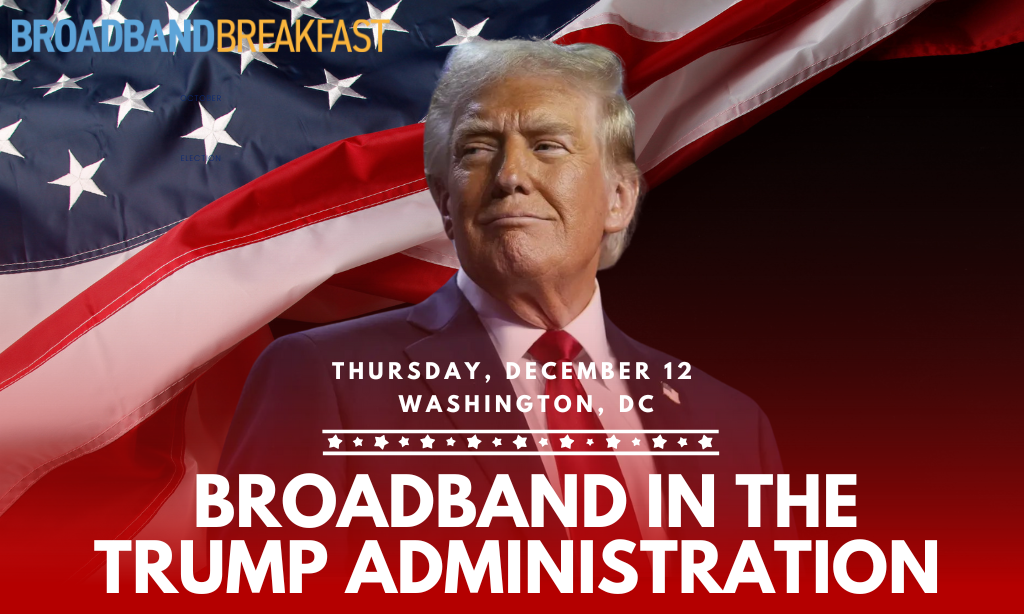Future Broadband Affordability Programs Might Have a Trust Problem: Experts
The ACP wind down left some participants wary, an outreach organization said.
Jake Neenan

WASHINGTON, Dec. 12, 2024 – Future broadband affordability plans might have a participation problem after the Affordable Connectivity Program ran dry earlier this year, experts said Thursday.
The ACP provided low-income households $30 per month toward their broadband bills – or more if they lived on Tribal lands – and expired in June after its allotment from Congress ran out.
There’s general agreement that something like the ACP is necessary for ensuring universal broadband access and to make the math work for providers building in hard-to-reach rural areas with other Infrastructure Act subsidies.
Mignon Clyburn, a former Democratic FCC commissioner and principal at consulting firm MLC Strategies, said at a Broadband Breakfast event former participants might be hesitant to sign up for a successor program after the ACP went away.
“Tell me, what faith do they have in us?” she said. “That we can implement a program that’s sustainable, that they can count on next year and the year after?”
Amy Huffman, policy director at the National Digital Inclusion Alliance, which did outreach work for the program, saw some of that discontent firsthand.
“When the program first started, people were putting up flyers in public housing to get people enrolled in the program,” she said. By the time money had run out, “our folks saw those fliers overwritten with the word ‘scam.’”
The ACP, intended as a successor to a separate pandemic response benefit, was launched in late 2021 by the Federal Communications Commission thanks to a $14.2 billion allocation by the Infrastructure Act. At its peak, more than 23 million households were enrolled.
The program fully ran out of cash in June, after a month of reduced support. There were efforts on Capitol Hill to extend the program through 2024, but Republican leadership wasn’t on board without scaling back the program’s eligibility criteria, which some saw as being too expansive.
Legislation that would have pared back eligibility along with more funding did get the greenlight from top GOP Senate members – including Vice President-elect JD Vance – but the vehicle for passing it, a must-pass FAA reauthorization bill, ultimately went forward without any extraneous amendments.
Data from ISPs suggests more than 90 percent of participants who subscribed to wireline broadband are still online for now – a majority of respondents to an FCC survey reported inconsistent internet access before the program – with about 1 million disconnecting. For participants using the benefit for mobile broadband, most no longer have a subscription, with approximately 9 to 10 million cancellations.
An ACP successor and USF
Going forward, lawmakers have said they’re aiming to fold the ACP into the FCC’s Universal Service Fund. That program supports a low-income broadband program called Lifeline, but it has fewer participants and offers less money, at about $9 per month.
It would be part of a broader revamp of USF, which spends about $8 billion a year supporting rural broadband but has since 1996 been funded by fees on interstate voice revenue. But that effort has proven complicated, both by debate over which industry should be tapped for future funding but also by a case recently taken up by the Supreme Court that challenges the USF’s entire contribution scheme.
Harold Furchtgott-Roth, former Republican FCC commissioner and a senior fellow at the Hudson Institute, said he thought the challengers had a strong case – he joined an amicus brief in support of them – and advocated for moving the USF to Congressional appropriations to protect it from future legal challenges. He noted that it would likely be an uphill battle, though.
“The reality is that the new administration has advisors called the ‘department of government efficiency,’” he said. “They’re looking for programs to cut. They’re not looking for new spending programs.”
Incoming Senate Commerce Committee Chair Ted Cruz, R-Texas, has supported the appropriations idea.
Roslyn Layton, a free-market economist and senior vice president at Strand Consult, was in favor of adding big tech companies to the contribution pool. That’s been supported by telecom providers and incoming FCC Chairman Brendan Carr.
Huffman said NDIA was agnostic as to who ultimately contributed as long as the fund remains sustainable, but that the group was against an appropriations model as it would be less predictable year-to-year for rural networks that rely on the program. NDIA is an intervenor of the FCC’s side in the USF challenge.
 Broadband BreakfastBroadband Breakfast
Broadband BreakfastBroadband Breakfast










Member discussion